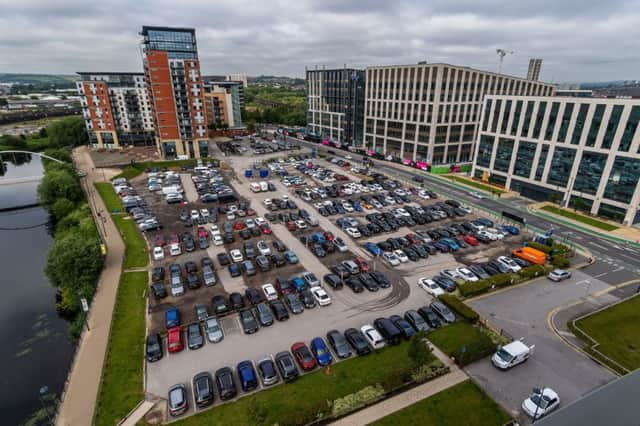Why we can build an MIT of the North - Tom Bridges


At a time of rapid economic and technological change, the places that will be successful in the knowledge economy are those that can create and commercialise innovation through research and development (R&D).
In the UK we underinvest in R&D. The Government aims to increase R&D spend to the OECD average of 2.4% of GDP, but very few parts of the UK meet this benchmark currently.
Advertisement
Hide AdAdvertisement
Hide AdDespite strong universities and some real success stories, many of our cities and regions have yet to build an innovation-led-economy with sufficient strength, coherence and critical mass.
Greater Boston in Massachusetts has built one of the world’s most dynamic economies based on innovation. It is anchored by the Massachusetts Institute of Technology (MIT) and other world class universities. We can learn from this example.
The UK2070 Commission agrees and has set out a vision to build a “MIT of the North”. A local team, led by the University of Leeds, is participating in MIT’s programme to learn from the Greater Boston story.
Collaboration is at the heart of its success. From universities, entrepreneurs, large corporates and angel investors to local and national government; industry and policy makers alike need to work together to create a successful ecosystem.
Advertisement
Hide AdAdvertisement
Hide AdThere are four calls to action to ensure initiatives such as these translate to economic growth in Yorkshire.
First, we need to rebalance and tackle the UK’s north-south divide in spending in R&D. Over half of our current R&D spend is concentrated in the South East corner of the nation. Only 5% is in Yorkshire. For far too long we have spent half our science budget in the London-Oxford-Cambridge “Golden Triangle” despite the fact that business spend on research is more balanced across the nation.
Second, a place-based approach to innovation is important. Innovation happens in places and and through collaboration. We need to build the right local networks between universities, large and small businesses, investors and government. The modern economy relies on intangible assets and networks such as knowledge, research and development, creativity, software, data, and talent.
This means knowledge spillovers are critical to the economic competitiveness of any region. Cities and city regions would benefit from greater influence and power over how decisions are made on public investment in R&D. They are best placed to identify the pull-through projects that help translate research into commercial applications.
Advertisement
Hide AdAdvertisement
Hide AdWe should back local initiatives, such as the not-for-profit organisation NorthInvest, that connect entrepreneurs and investors.
Third, we should get behind innovation districts in our cities. The geography of the economy is changing. Knowledge intensive jobs are moving into urban areas where innovative people, firms and organisations are sharing ideas. Cities, universities and cultural institutions are supporting and capitalising on this trend through bold investments to create new campuses, business space, and public realm.
The Advanced Manufacturing Innovation District in Sheffield and Rotherham, and the Nexus project in the Leeds Innovation District are attracting significant investment and supporting large and small firms to innovate, and these can be built on.
We can apply the lessons from successful innovation districts to major regeneration projects such as Leeds South Bank, York Central, Hull’s Fruit Market (which already has the impressive C4DI digital accelerator), and in Bradford, reconnecting the University of Bradford with the developing city centre cultural and office quarter.
Advertisement
Hide AdAdvertisement
Hide AdFinally, as the economist Mariana Mazzucato has argued, there is the potential to adopt a mission-based approach to innovation. Fifty years ago the Apollo moon missions were a huge catalyst for innovation and technology transfer. Today we face major societal challenges such as climate change, an ageing population, inequalities and social exclusion, automation, housing supply, and mobility. These are global issues that will have big local impacts on our cities and regions.
We can use the UN Sustainable Development Goals as a framework for ambitious missions to address these local challenges to unlock global markets for new solutions.
This could be our 21st century equivalent of the moon shoot. The time to act is now.
Tom Bridges, is the Leeds Office Leader at Arup.